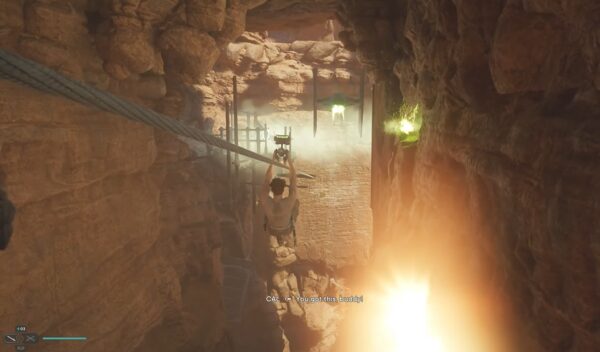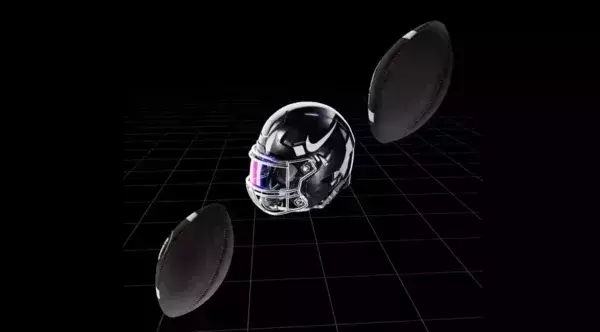
As a character, and especially as a protagonist, the cat in Stray is a weird and thought-provoking case, well worth a deeper look…
It’s no exaggeration to say that the player avatar in Stray, who so fully embodies cat-ness through animation, sound, texture, and game feel, is far beyond any other digital feline we’ve experienced before. I loved playing her role, and her uniqueness highlights some key narrative design topics. Let’s dig into that.
First, there’s the issue of how much the cat understands, with the game seeming hazy on whether the cat comprehends the world around her. Many puzzle solutions require the cat to have understood the complex causal relationships between buttons, levers, and electrical equipment, without the affordance of the little robot friend B-12 goading her with a laser pointer or something similar. Several sequences show the cat seemingly understanding what batteries do, comprehending language, and the game strongly implies that the cat understands her own journey to open the sealed city to the Outside. At the same time, the cat is just a cat. It breaks things, wastes time, scratches random furniture, and freaks out when you put a harness on it.

During the smoothest part of the narrative experience, B-12 manipulates the features of the city to highlight the way forward.
I can only imagine the stresses the designers had over the cat’s level of cognition, and the result in-game is uncannily uneven at times. The cat is an extreme example, but this isn’t a novel problem. Narrative designers must always be thinking about what’s in the mind of the player and the mind of their character at any given point, and we work to make sure the difference between those minds is not unintentionally jarring. A tall order in Stray, a little imperfectly met.
ANGEL FACE
Second, as a protagonist, she doesn’t seem to change or grow, but in this case, this is not a criticism. The cat is a special type of protagonist known as a ‘travelling angel’, or ‘supporting protagonist’, but which I prefer to call a redemption angel. A redemption angel is a protagonist who is not truly the story’s core, in that they don’t experience change themselves; instead, their presence inspires or enables growth in others. In The Shawshank Redemption and Mad Max: Fury Road, neither Tim Robbins’ Andy nor Tom Hardy’s Max really change, but they do inspire and enable great redemptive change in Morgan Freeman’s Red and Charlize Theron’s Furiosa. In films and TV this is somewhat uncommon, but in games this trope collides with that of the Silent Protagonist and the Game-as-Morality-Fantasy and is therefore more frequent.
Classic examples are: Gordon Freeman’s redemption of Alyx in Half-Life 2, the player’s effect on quest-givers in Bethesda’s The Elder Scrolls and Fallout entries, and all of Mass Effect’s companion quests. In Stray, the majority of story, change, and expression is contained in its B-plot, about B-12 and the last human scientist, and its C-plot, about robot companions Momo, Clementine, and the Outsiders. The cat either inspires them to action through presence or determination, or enables their change by being in the right place at the right time to get them past a hurdle.

Look deep into those eyes, and ask yourself: does she know that bringing Momo his friends’ journals will get him to help unlock a door?
On the other hand, the cat’s story could (and there should be lots of stress on ‘could’) be interpreted as a cat-specific coming-of-age tale. After all, the titular cat does look adolescent, but anyone who’s watched documentaries on wild felines, such as the fantastic Attenborough offering Dynasties, will know that young cats follow what is, to us, quite a sad pattern. With the sole exception of lions, cats naturally grow to be incredibly solitary creatures. When kittens or cubs are born, they are dependent on the mother for a period ranging from several months to a couple of years, and once this is over, the family unit will split forever. Often, the mother leaves first, and the litter will slowly whittle down for a few weeks or months, splitting off one at a time until all are alone. Accepting aloneness is simply what it means for a wild cat to grow up.
Stray begins with a group of four adolescent-looking cats. They seem to be in a place of safety, but sooner or later, they will have to venture out into the world. First, one headstrong individual leaves, and then the others follow. Again, this is very much like the behaviour of a real litter soon after the mother’s abandonment, and our cats are also still vocal, something the majority of wild cats lose in adulthood. Our cat, however, takes a tumble and is lost to the bowels of a great ‘sealed’ city before she can leave her siblings willingly, and we human players imply that our goal is to reunite with the group somehow. But the game, from that point on, is one of repeatedly leaving characters behind; Momo cannot follow us into the sewers, Clementine can’t join us on the train, and B-12, the game’s most prominent speaking character, cannot accompany us Outside.
In a moment that might show growth, one could argue that when the cat exits the city she is choosing to leave B-12; theoretically, if the cat’s as smart as it appears to be in certain sections of the game, it could have tried to return B-12 to the city for repair (or, it could simply be accepting the robot’s fate). But either way, the cat leaves, and the final shot shows her exiting the city alone. We humans will tell ourselves, ‘Oh, she’s off to find the others, I’m sure’, but if this is a coming-of-age tale for our cat, then the ending is not so saccharine, and rather more profound. The cat has, perhaps, grown out of attachment entirely, as she was destined to eventually, regardless.
In a world full of weird and wonderful characters to play as, Stray might be one of the only games to not anthropomorphise the player avatar, to tell a story not intuitive to us humans. Again, a tall order imperfectly met, but a damn respectable thing nevertheless.





